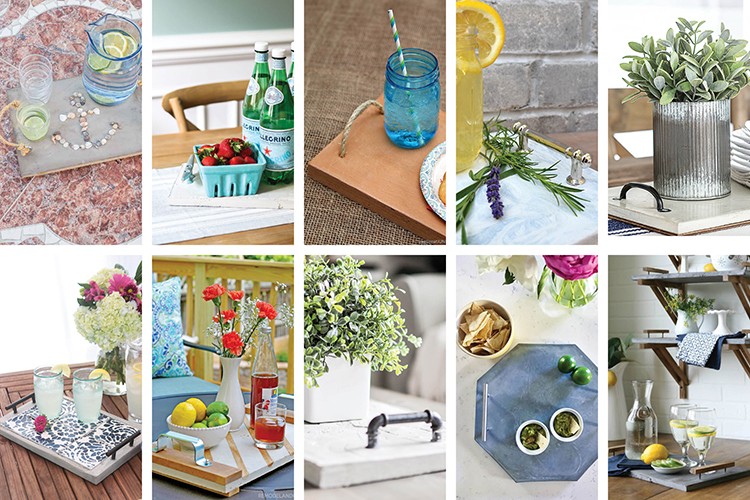(BPT) – DIY continues to thrive, with many homeowners planning to tackle projects big and small themselves. According to the National Association of Realtors, home improvement projects that reflect adding the homeowner’s personality to their home were twice as popular to DIY than hire a professional. What’s more, 81% of those who DIY a project expressed a major sense of accomplishment.
DIY allows you to personalize your space in a unique way while saving money, especially when you utilize recycled materials for extraordinary upcycled results. You’d be surprised how easy it can be even to create lighting options for your home with simple things you have around your house, like plastic pop or water bottles.
Versatile pendant lighting has been in style, in one form or another, for hundreds of years. From old-fashioned chandeliers to today’s industrial-looking pendant lighting fixtures, this lighting style is popular for good reason. Pendant lighting provides focused light that can cover a large area, depending how far from the ceiling you hang it. This makes it ideal for kitchens, dining areas or anywhere you want to use lighting to create a sense of ambiance. Pendant lighting is especially popular for game rooms, such as over pool tables. It’s not only functional and space saving, but it can transform the look of the whole room, for very little cost.
To tap into the power of pendant lighting to create an industrial minimalist look for one of your rooms, why not make your own concrete pendant lamp? Just a few steps results in modern designer-style lighting without the cost, using recycled plastic bottles and Quikrete 5000 for a more industrial look or Quikrete Sand Topping Mix for a more refined look. Simply mix water with specially formulated concrete and you can create a wide array of furnishings and decor, complete home improvement projects and much more.
Concrete pendant lamp instructions:
Note: When working with cement-based products, always wear eye protection and waterproof gloves. Visit Quikrete.com to watch an instructional video on this project.
Step 1: Use scissors to cut the bottom of a clean soda bottle.
Step 2: Drill a hole in the cap of both bottles. The hole should be just big enough to fit the metal tube.
Step 3: Connect the bottle caps using the tube and nuts on either side of each cap.
Step 4: Screw the bottles into the caps, starting with the larger first.
Step 5: Use deck screws to stabilize the bottles.
Step 6: Mix the concrete and fill the mold using a large spoon.
Step 7: Shake the mold to release any air bubbles and make sure the concrete settles.
Step 8: Allow the concrete to cure for at least 20 hours before removing the mold.
Step 9: Remove the bottles using a box cutter and the scissors.
Step 10: Sand down the edges of the lamp using 120 grit sandpaper.
Step 11: Cut the socket end of the wire and thread the cut end through the bolt hole. Strip the wires and twist them together. Cover the exposed metal with electrical tape or wire nuts and make sure the pendant is securely fastened.
To make your project even more interesting, you could add a liquid coloring agent to your cement (at Step 6). Quikrete offers attractive options in red, brown, buff, charcoal and terra cotta to further enhance your pendant light. Consider the color palette already present in the room — wall paint, flooring and furnishings — before choosing a complementary color.
With a little creativity and a touch of elbow grease, you can enjoy personal satisfaction in creating DIY home decor and improvements that enhance your house with one-of-a-kind style. Plus you can feel proud you’re using recycled materials to complete your project with contemporary flair that embraces today’s top trends.

